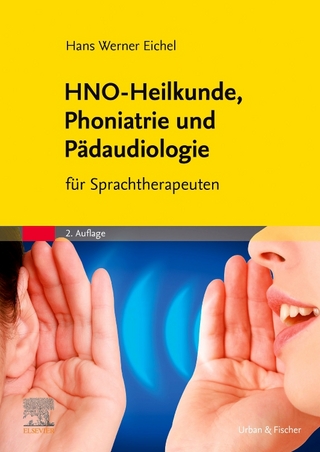
Assessment in Speech-Language Pathology
Plural Publishing Inc (Verlag)
978-1-63550-204-6 (ISBN)
- Titel ist leider vergriffen;
keine Neuauflage - Artikel merken
This thoroughly updated sixth edition of the best-selling text Assessment in Speech-Language Pathology remains an invaluable resource for instructors, students, and clinicians. The book covers the diagnosis, evaluation, and treatment of a wide range of communication disorders in adults and children. This one-of-a-kind manual provides a comprehensive package of reference materials, explanations of assessment procedures, practical stimulus suggestions, and hands-on worksheets and screening forms.
The highly practical resource is separated into four easy-to-navigate sections: Part I highlights preparatory considerations; Part II includes procedures and materials for obtaining, interpreting, and reporting assessment information; Part III provides materials and suggestions for assessing communicative disorders. Part IV presents a quick-reference section, providing information on hearing considerations, medical diagnoses, and caregiver handouts.
This must-have sixth edition reflects the latest research, best practices, and important trends and developments for assessment in speech-language pathology.
New to the Sixth Edition
Updated content throughout to reflect current research and practice
New chapter on Selective Mutism
New section covering the assessment of transgender voice
Updated Sources of Additional Information in every chapter, with addition of recommended mobile applications for speech-language assessment
Key Features
Full-color design with images, charts, and illustrations to engage readers and display key concepts
Each chapter concludes with practical forms, including worksheets, checklists, and additional sources of information
Glossary of key terms
Chapter tabs with separate colors for quick and easy access
Access to a PluralPlus companion website with PowerPoint lecture slides and printable forms and worksheets
Kenneth G. Shipley, PhD is Professor, Department Chair, and Associate Provost Emeritus at California State University, Fresno. In addition to teaching in various areas of speech-language pathology for many years, he also served as Chair of Communicative Disorders and Deaf Studies, Associate Dean of the College of Health and Human Services, and the University's Associate Provost. Previous positions included teaching in the School of Medicine at the University of Nevada, Reno; and practicing speech-language pathology in the public schools, hospital, and private practice settings.+++++++++++++++++Julie G. McAfee, MA, CCC-SLP is a practicing speech-language pathologist in Northern California. She has professional experience serving a wide variety of adult and child populations. Over the years, she has worked in acute care hospitals, rehabilitation hospitals, skilled nursing facilities, client homes, preschools, elementary schools, and middle schools. She is currently practicing at Bird-Kern-Dalmia, a private practice in San Jose, California. Mrs. McAfee is passionate about helping individuals obtain the highest possible level of communicative ability to improve their quality of life. Presently, she primarily serves pediatric populations, but she also enjoys working with adult clients as opportunities arise.
Part I. Preparatory Considerations
Chapter 1. Foundations of Assessment
Overview of Assessment
Assessment Methods
Psychometric Principles
Standardized Test Administration
Health Insurance Portability and Accountability Act (HIPAA)
Code of Fair Testing Practices in Education
Code of Ethics for Speech-Language Pathologists
Concluding Comments
Chapter 1 Forms
Chapter 2. Multicultural Considerations
Pre-assessment Knowledge
Planning and Completing the Assessment
Making a Diagnosis
Working with Interpreters
Concluding Comments
Chapter 2 Forms
Appendix 2-A Speech and Language Characteristics of African American English
Appendix 2-B Speech and Language Characteristics of Spanish
Appendix 2-C Speech and Language Characteristics of Asian Languages
Part II. Gathering and Reporting Assessment Information
Chapter 3. Obtaining Pre-assessment Information
Obtaining Pre-assessment Information
Written Case History
Allergy Awareness
Intake Interviews
Information from Other Professionals
Concluding Comments
Sources of Additional Information
Chapter 3 Forms
Chapter 4. Reporting Assessment Findings
Reporting Assessment Findings
Information-Giving Meetings
Writing Assessment Reports
Clinical Correspondence
Writing Soap Notes
Concluding Comments
Sources of Additional Information
Appendix 4-A Four Sample Clinical Reports
Appendix 4-B Sample IFSP
Appendix 4-C Sample IEP
Appendix 4-D Sample Clinical Correspondences
Part III. Resources for Assessing Communicative Disorders
Chapter 5. Assessment Procedures Common to Most Communicative Disorders
Orofacial Examination
Speech and Language Sampling
Reading Passages
Evaluating Rate of Speech
Determining Intelligibility
Syllable-by-Syllable Stimulus Phrases
Charting
Concluding Comments
Sources of Additional Information
Chapter 5 Forms
Appendix 5-A
Appendix 5-B
Chapter 6. Assessment of Speech Sound Disorders
Overview of Assessment
Screening
Formal Tests
Identifying Sound Errors from a Speech Sample
Stimulability
Developmental Norms for Phonemes and Blends
Frequency of Occurrence of Consonants
Descriptive Features of Phonemes
Distinctive Features of Consonants
Phonological Processes
Childhood Apraxia of Speech
Concluding Comments
Sources of Additional Information
Chapter 6 Forms
Appendix 6-A
Chapter 7. Assessment of Language in Children
Overview of Assessment
Normal Language Development
Language Disorder Categories
Screening
Assessment for Early Intervention
Assessing School-Age Children
Language Sampling and Analysis
Assessment of Morphologic Skills
Determining Mean Length of Utterance
Assessment of Semantic Skills
Assessment of Syntactic Skills
Assessment of Pragmatic Skills
Making a Diagnosis
Concluding Comments
Sources of Additional Information
Chapter 7 Forms
Chapter 8. Assessment of Literacy
Overview of Assessment
Normal Reading and Writing Development
Descriptions and Categories of Reading Disabilities
Assessment of Early Literacy
Assessment of Reading
Assessment of Writing
Multicultural Considerations
Concluding Comments
Sources of Additional Information
Chapter 8 Forms
Chapter 9. Assessment of Selective Mutism
Overview of Assessment
Definition and Characteristics of Selective Mutism
Behaviors Associated with Selective Mutism
Avoidance Behaviors
The Negatively Reinforced Avoidance Pattern
Collaboration with Family and Other Professionals
Assessment of Current Speaking Abilities
Assessment of Emotional and Social Factors
Assessment of Speech and Language
Making a Diagnosis
Concluding Comments
Sources of Additional Information
Chapter 9 Forms
Chapter 10. Assessment for Autism Spectrum Disorder and Social Communication Disorder
Overview of Assessment
Characteristics of Autism Spectrum Disorder
Characteristics of Social (Pragmatic) Communication Disorder
Early Indicators of Autism Spectrum Disorder or Social Communication Disorder
Social Communication
Receptive and Expressive Language Concerns
Theory of Mind
Assessment and Diagnosis
Concluding Comments
Sources of Additional Information
Chapter 10 Forms
Chapter 11. Assessment for Augmentative or Alternative Communication (AAC)
Overview of Assessment
Determining Communicative Needs
Assessing Language and Cognitive Skills
Assessing Sensory and Motor Capabilities
Determining the Most Appropriate AAC System
Concluding Comments
Sources of Additional Information
Chapter 11 Forms
Chapter 12. Assessment of Stuttering and Cluttering
Overview of Assessment
Defining Stuttering
Speech Sampling
Disfluency Indexes
Secondary Behaviors
Speech Rate
Assessing Feelings and Attitudes
Criteria for Diagnosing Stuttering
Stimulability
Cluttering
Concluding Comments
Sources of Additional Information
Chapter 12 Forms
Chapter 13. Assessment of Voice and Resonance
Overview of Assessment
Anatomy for Voice and Resonance
Categories of Voice Disorders
The Multidisciplinary Team
Screening
Client History and Present Concerns
Perceptual and Instrumental Examination of Voice
Evaluation of Pitch
Evaluation of Vocal Intensity
Evaluation of Vocal Quality
Assessing Respiratory Support for Speech
Maximum Phonation Time
The S/Z Ratio
Assessment Hardware and Software
Assessment of Resonance
Assessment of Alaryngeal Clients
Alaryngeal Communication Options
Assessment of Clients with Cleft Lip and/or Palate
Assessment of the Transgender Client
Concluding Comments
Sources of Additional Information
Chapter 13 Forms
Chapter 14. Assessment of Acquired Neurogenic Language Disorders
Overview of Assessment
The Brain
Assessment of Aphasia
Assessment of Right Hemisphere Syndrome (RHS)
Assessment of Clients with Traumatic Brain Injury
Assessment of Clients with Neurocognitive Disorder (Dementia)
Concluding Comments
Sources of Additional Information
Chapter 14 Forms
Chapter 15. Assessment of Acquired Neurogenic Speech Disorders
Overview of Assessment
The Cranial Nerves
Assessment of Dysarthria
Assessment of Apraxia of Speech (AOS)
Differential Characteristics of Dysarthria and Apraxia of Speech
Concluding Comments
Chapter 15 Forms
Chapter 16. Assessment of Dysphagia
Overview of Assessment
Overview of a Normal Swallow
Clinical Assessment of Pediatric Dysphagia
Administration and Interpretation
Clinical Assessment of Adult Dysphagia
Graphic Imaging
Concluding Comments
Sources of Additional Information
Chapter 16 Forms
Part IV. Additional Resources
Chapter 17. Hearing Considerations
Overview of Common Hearing Disorders
Tinnitus
Standard Classification of Hearing Loss and the Effects on Communicative Development
Hearing Screening
Hearing Assessment
Speech Audiometry
Auditory Brainstem Response
Otoacoustic Emissions
The Speech Banana
Environmental Noise Levels
Hearing Aids
Cochlear Implants
Concluding Comments
Sources of Additional Information
Chapter 17 Forms
Chapter 18. Medical Diagnoses Associated with Communicative Disorders
Diseases and Conditions
Syndromes
Concluding Comments
Sources of Additional Information
Chapter 19. Quick Reference and Caregiver Handouts
Speech, Language, and Motor Development
Reading and Writing Development
What is ? Client and Caregiver Handouts
Sources of Additional Information
References
Glossary
Index
| Erscheinungsdatum | 08.11.2019 |
|---|---|
| Verlagsort | San Diego |
| Sprache | englisch |
| Maße | 216 x 279 mm |
| Themenwelt | Medizin / Pharmazie ► Gesundheitsfachberufe ► Logopädie |
| ISBN-10 | 1-63550-204-7 / 1635502047 |
| ISBN-13 | 978-1-63550-204-6 / 9781635502046 |
| Zustand | Neuware |
| Informationen gemäß Produktsicherheitsverordnung (GPSR) | |
| Haben Sie eine Frage zum Produkt? |
aus dem Bereich


